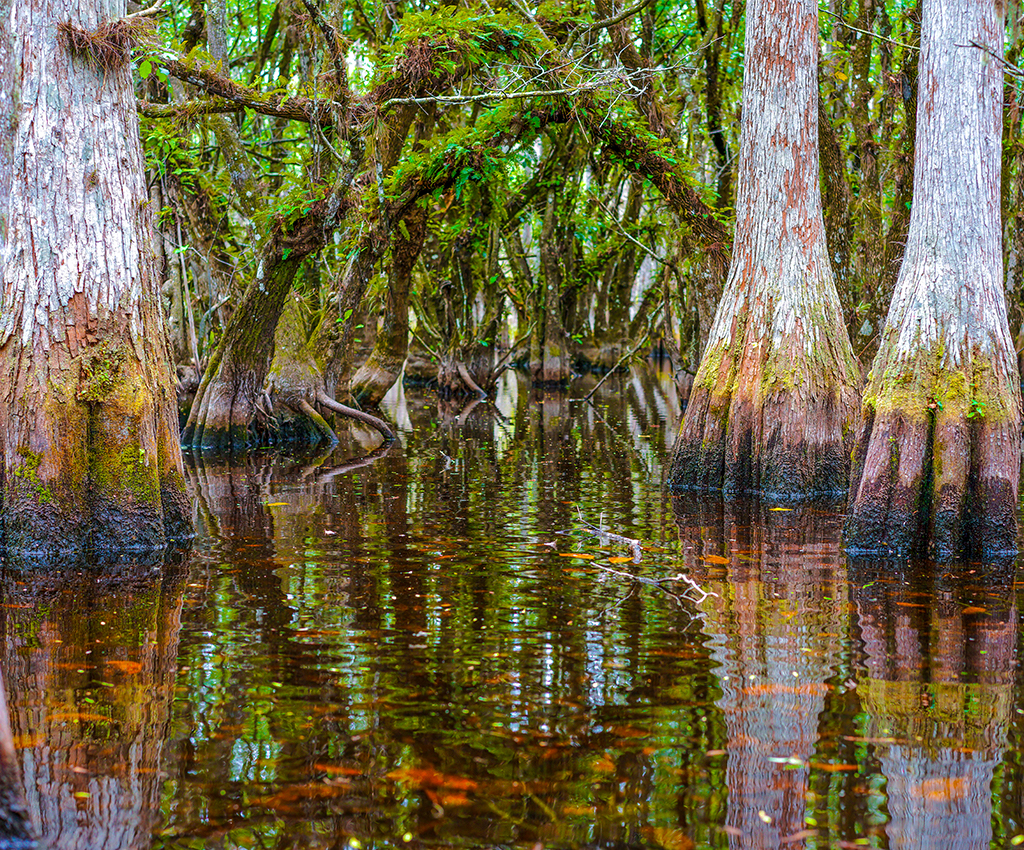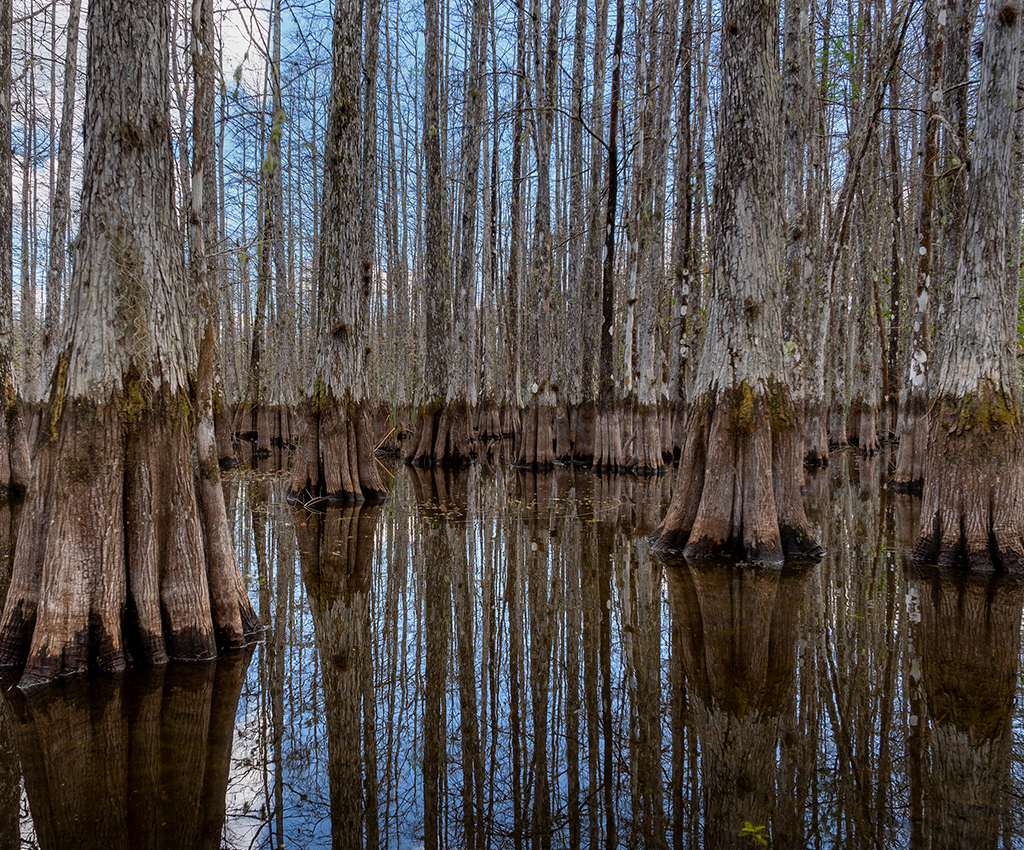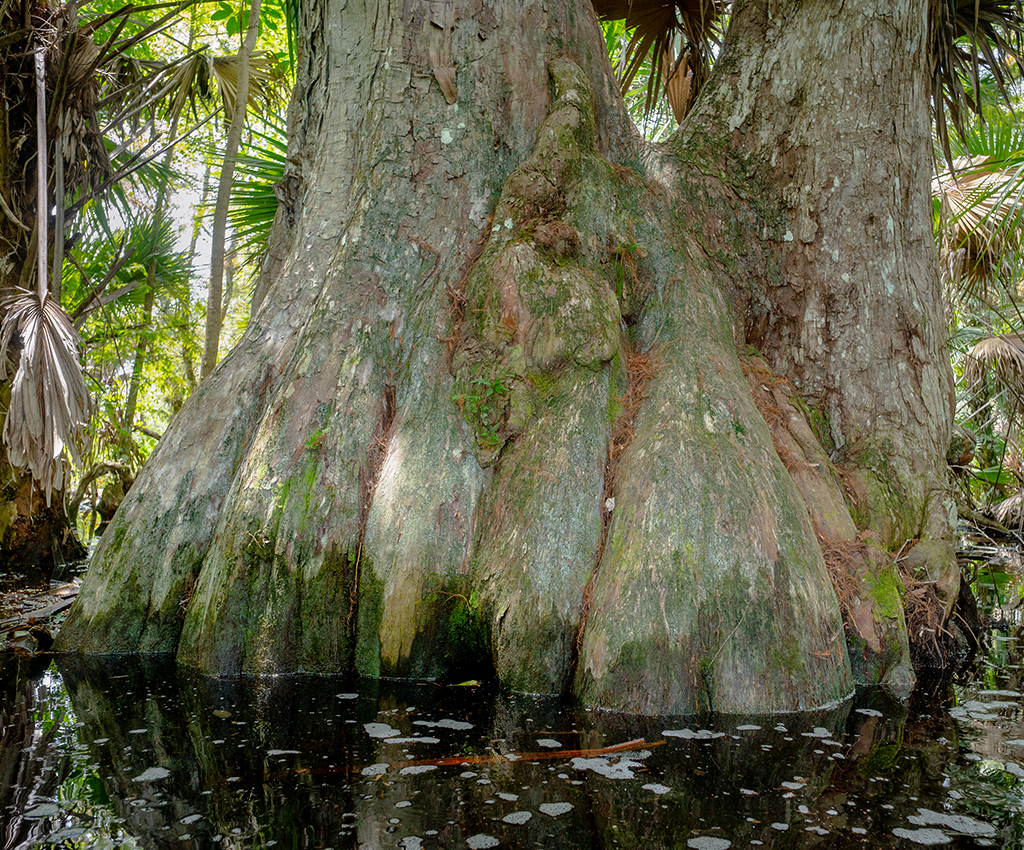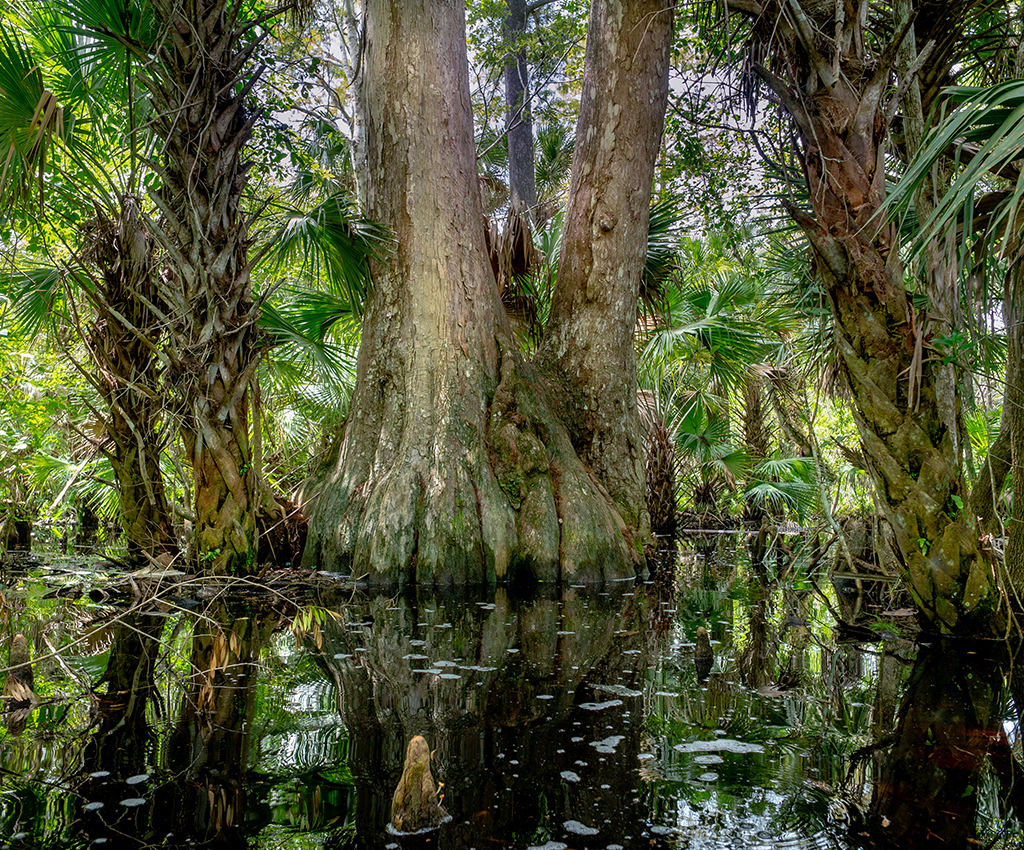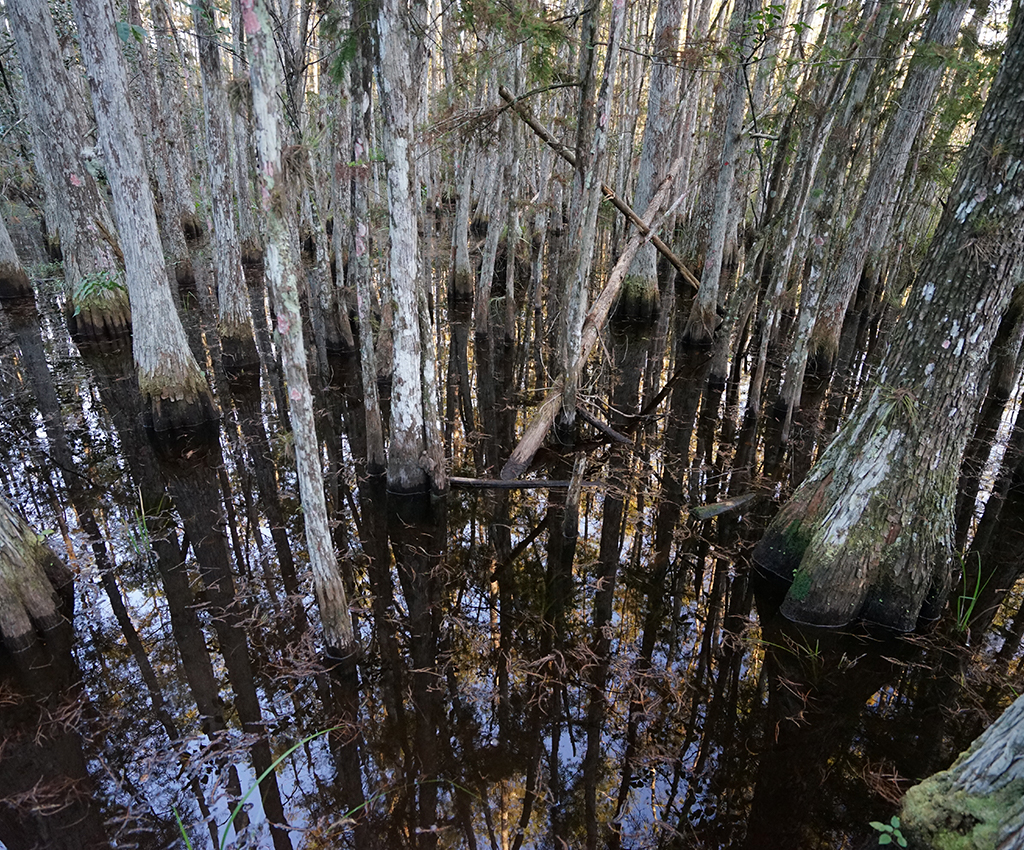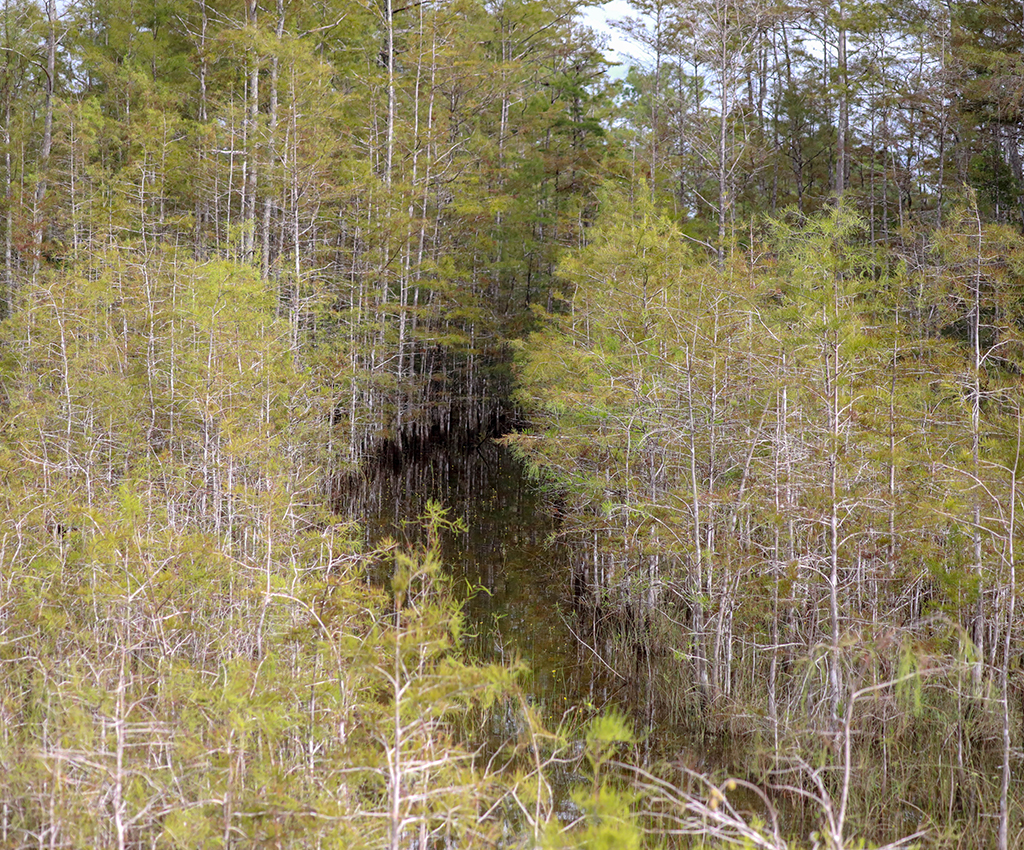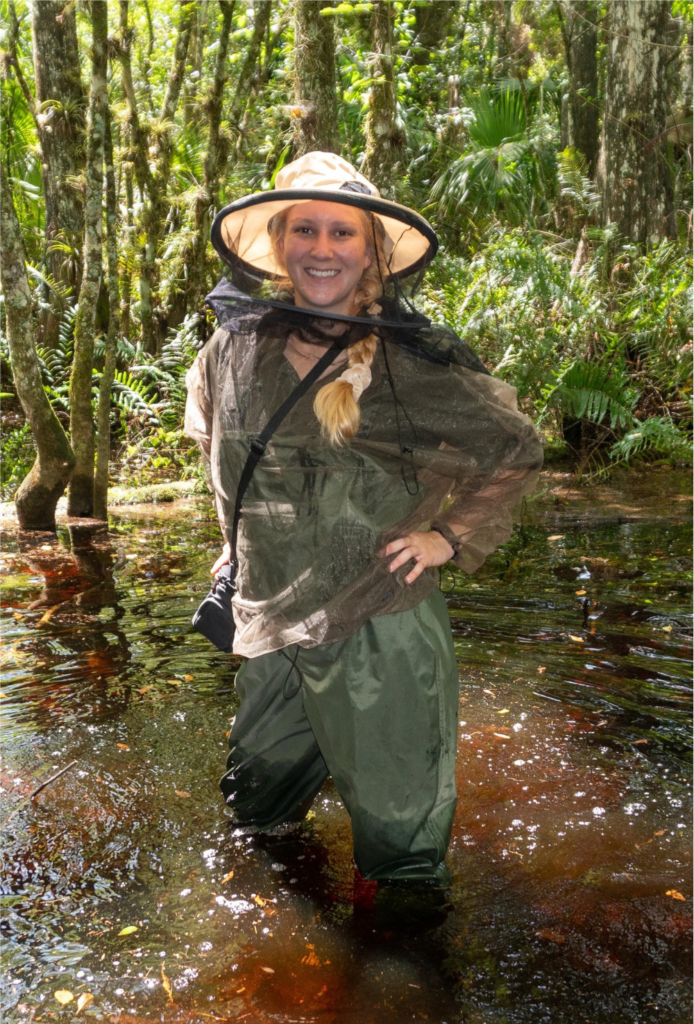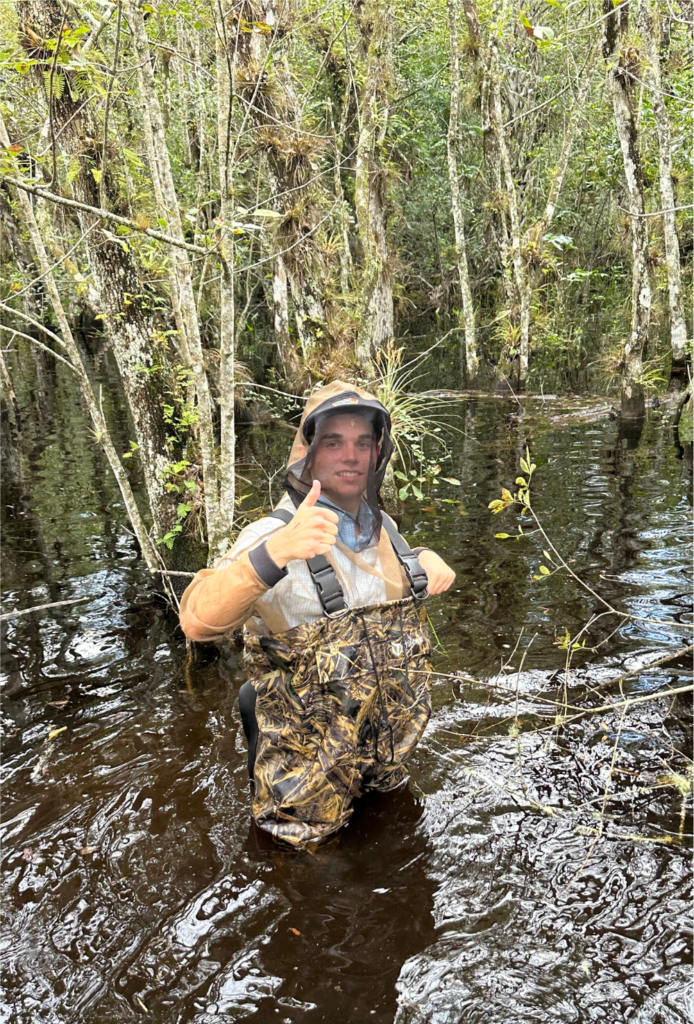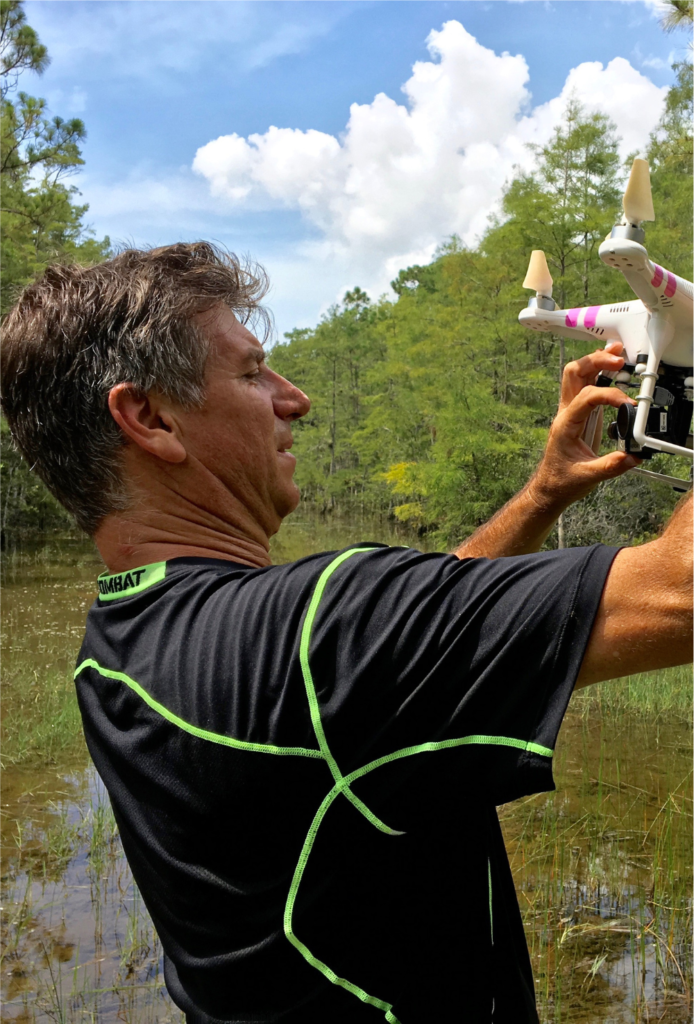Cypress Trees
Cypress trees play a crucial role in the Florida Everglades, both ecologically and environmentally. As one of the few trees adapted to thrive in the region’s waterlogged, swampy conditions, cypress trees, particularly Bald and Pond Cypress, form the backbone of the Everglades’ forested areas. Their buttressed trunks and extensive root systems help prevent soil erosion and regulate water flow, which is vital for maintaining the balance of this wetland ecosystem. Additionally, cypress trees provide critical habitat for a wide range of wildlife, from birds that nest in their branches to aquatic species that thrive in the shaded waters beneath them. Their dense root systems also improve water quality by filtering sediments and pollutants. Overall, cypress trees are key to supporting biodiversity, stabilizing the environment, and ensuring the health and sustainability of the Everglades.
cypress tree facts
The history of the cypress tree, particularly the Bald Cypress, dates back thousands of years and is deeply intertwined with the ecosystems of the southeastern United States. Known for their resilience, cypress trees have been a vital part of wetland habitats like the Florida Everglades for centuries. In the early 20th century, they were heavily logged for their durable, rot-resistant wood, used in construction and boat building. Many old-growth cypress forests were decimated during this time, leading to a significant loss of these ancient trees. Today, conservation efforts focus on protecting the remaining cypress populations and restoring wetlands to ensure these majestic trees continue to thrive in their natural habitats.
Stats
Slow-growing and long-lived trees.
Up to: (100 feet) in height and 1 meter (3.3 feet) in diameter.
Bark: starts as reddish-brown and weathers to an ashy gray.
Seeds: are green, globular, and usually no more than 3.5 cm (1.4 inches) in diameter.
Vulnerability
Stats
Slow-growing and long-lived trees.
Up to: (100 feet) in height and 1 meter (3.3 feet) in diameter.
Bark: starts as reddish-brown and weathers to an ashy gray.
Seeds: are green, globular, and usually no more than 3.5 cm (1.4 inches) in diameter.
The history of the cypress tree, particularly the Bald Cypress, dates back thousands of years and is deeply intertwined with the ecosystems of the southeastern United States. Known for their resilience, cypress trees have been a vital part of wetland habitats like the Florida Everglades for centuries. In the early 20th century, they were heavily logged for their durable, rot-resistant wood, used in construction and boat building. Many old-growth cypress forests were decimated during this time, leading to a significant loss of these ancient trees. Today, conservation efforts focus on protecting the remaining cypress populations and restoring wetlands to ensure these majestic trees continue to thrive in their natural habitats.
News & Updates
Sign up to receive the latest news and updates!

